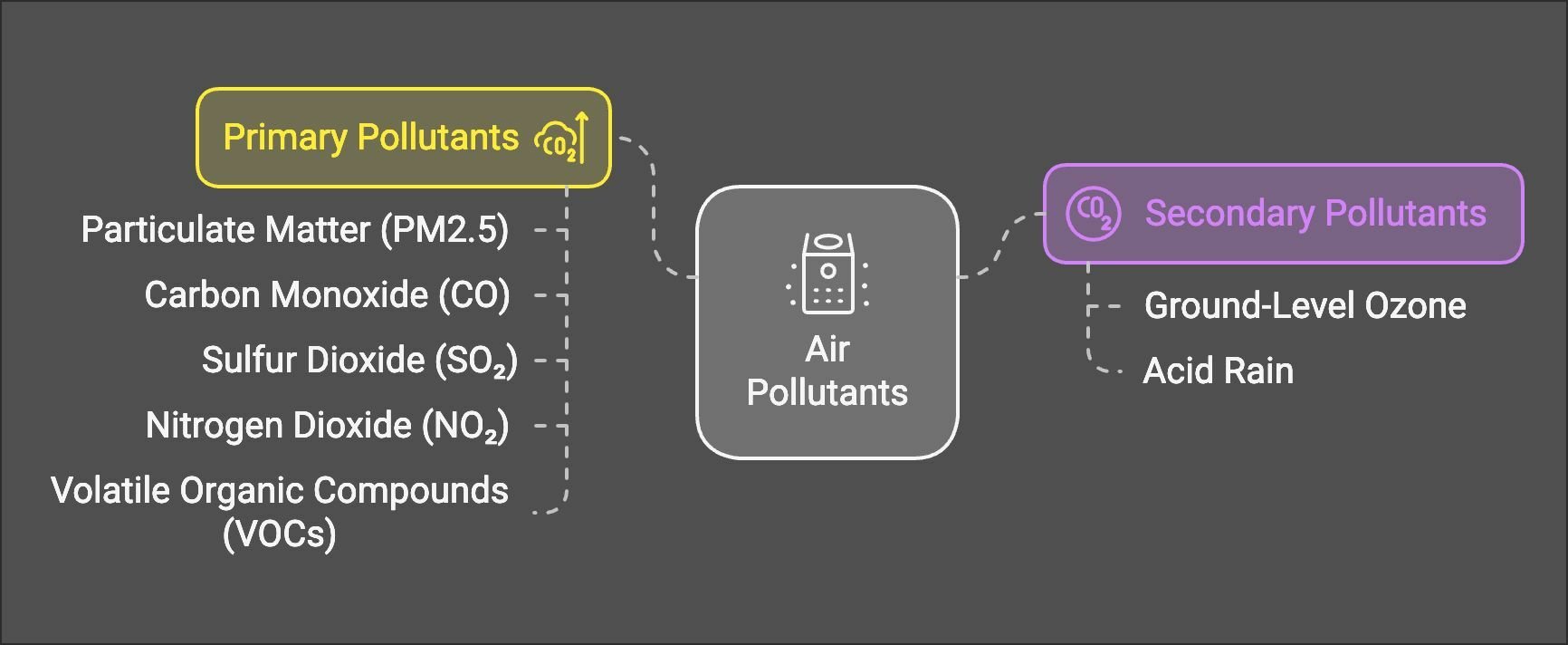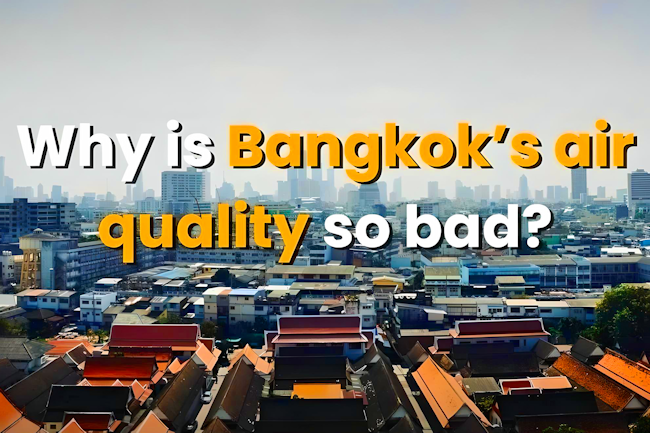Ranked as the 36th most air-polluted country in the world, Thailand has been facing challenges with air quality as of late.
The issue has become more urgent than ever as on January 8, Bangkok found its way to Rank 8th on the list of the most polluted cities in the world. In most cases, dust pollution is over five times the levels deemed safe.
To get a better idea of how air pollution got so bad, the National Economic and Social Development Council (NESDC) shared that over 10 million Thais sought treatments for pollution-related sicknesses in 2023 alone.
CAUSES OF POLLUTION
INTERNAL FACTORS
VEHICLE EMISSIONS
HIGH DENSITY POPULATION
EXTERNAL FACTORS
AGRICULTURAL BURNING
INDUSTRIAL EMISSIONS
METEROROLOGICAL CONDITIONS
Different types of pollutants
Air pollution consists of two distinct categories of harmful particles: primary pollutants, which are released directly into the atmosphere from their sources, and secondary pollutants, which form when different airborne substances react with each other in the environment.
These two classifications help scientists and policymakers better understand and address the complex nature of air contamination.

Particulate Matter (PM), or PM2.5, is particularly dangerous due to its ability to penetrate deep into our lungs. Other significant primary pollutants include Carbon Monoxide (CO) from incomplete fossil fuel combustion, Sulfur Dioxide (SO₂) from power plants, Nitrogen Dioxide (NO₂) from vehicle emissions, and Volatile Organic Compounds (VOCs) from everyday products like paints and solvents.
Secondary pollutants, on the other hand, are formed through chemical reactions in the atmosphere at the ground-level ozone, which develops when VOCs react with NO₂ in sunlight, contributing to smog formation. Another crucial secondary pollutant is acid rain, which occurs when sulfur dioxide and nitrogen oxides interact with atmospheric water vapour, damaging the ecosystems below.
| Primary pollutants | Secondary pollutants |
| Particulate Matter (PM) | Ground-Level Ozone (O₃) |
| Carbon Monoxide (CO) | Smog |
| Nitrogen Dioxide (NO₂) | Acid Rain |
| Sulfur Dioxide (SO₂): | Peroxyacetyl Nitrate (PAN) |
Bangkok’s air quality crisis stands out as a colossal challenge shaped by both internal and external factors. Within the city, vehicular emissions stand as the primary contributor, compounded by an ageing fleet of diesel vehicles and the city’s dense urban development.
Unfortunately, the city’s geographical location and meteorological conditions work against its favor. The nature of Bangkok’s location means that these pollutants are trapped close to the ground, creating a persistent blanket of contaminated air.



